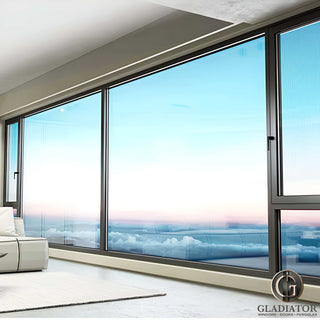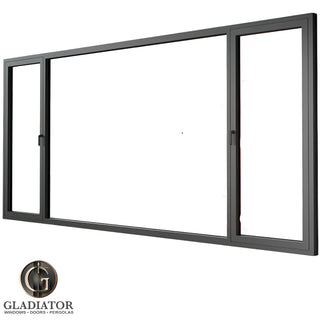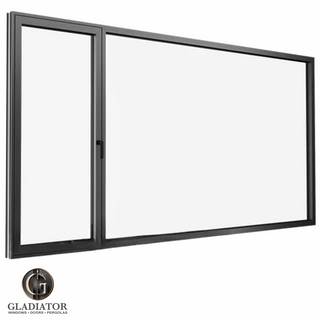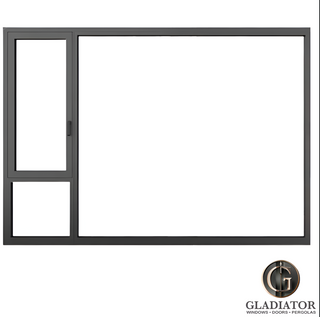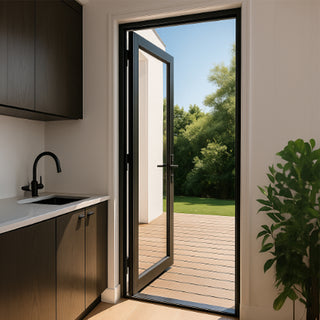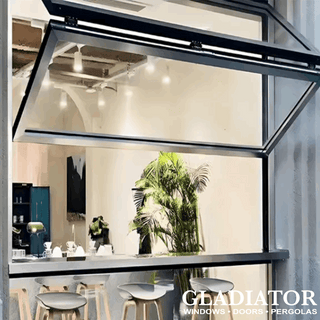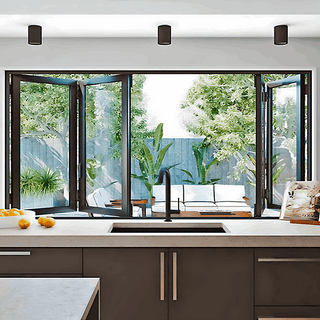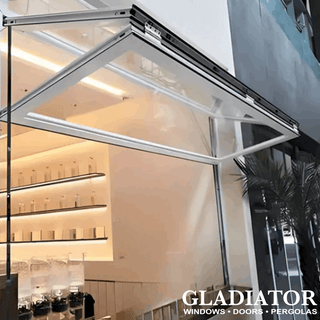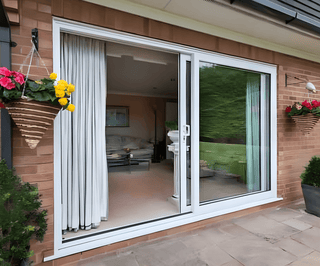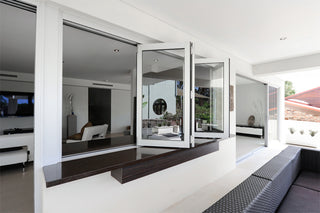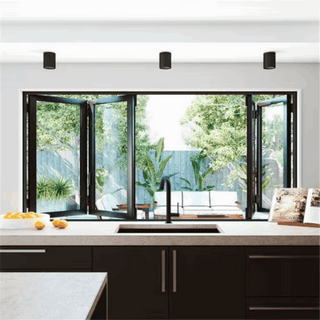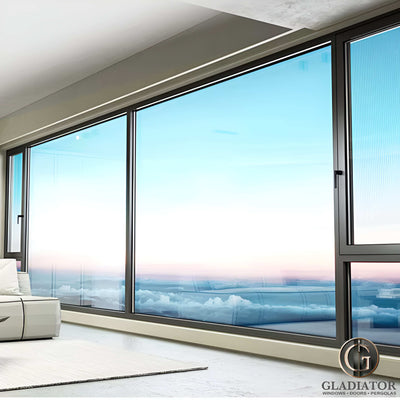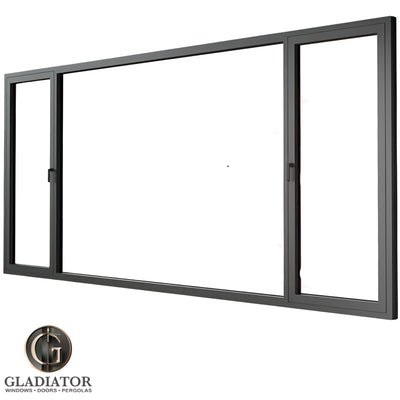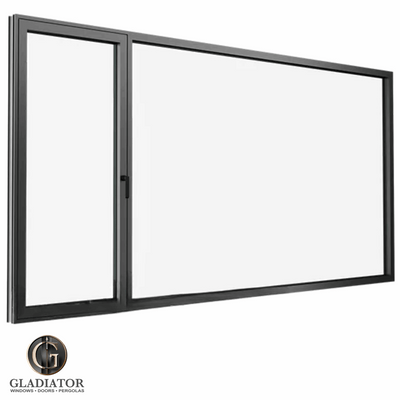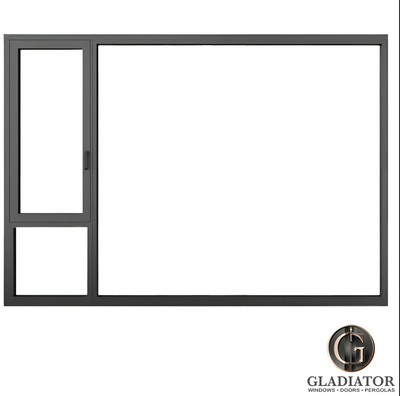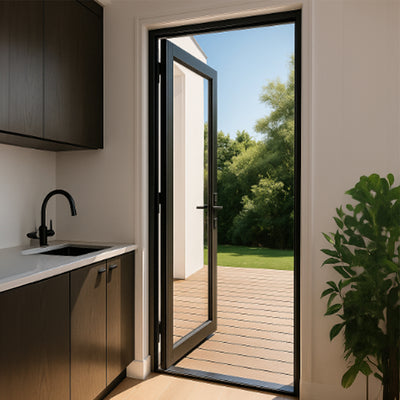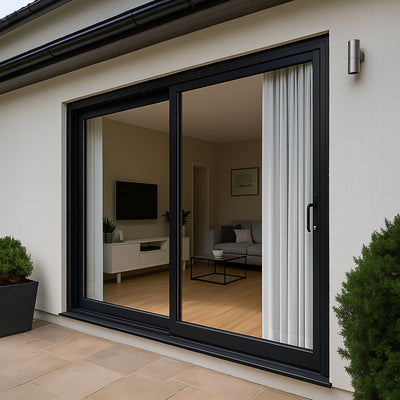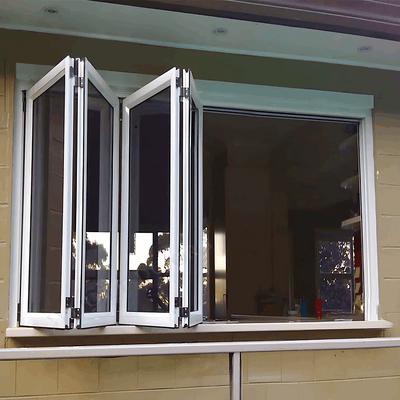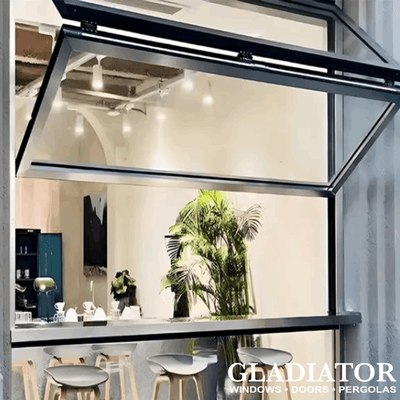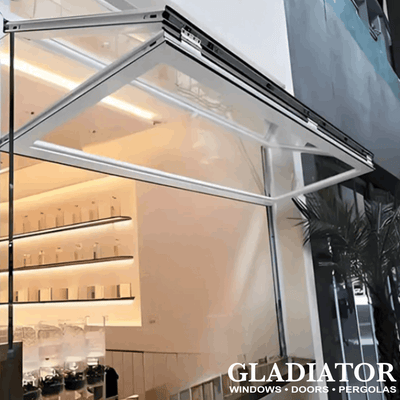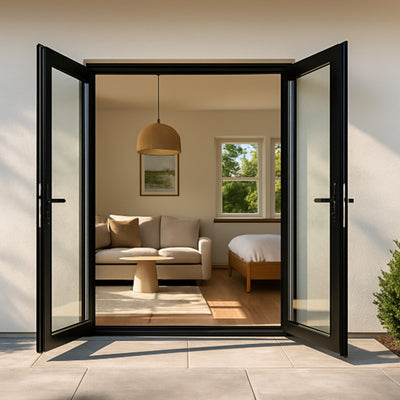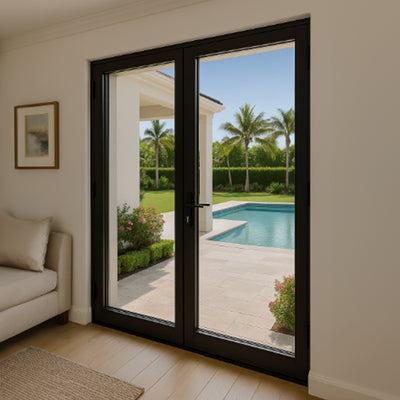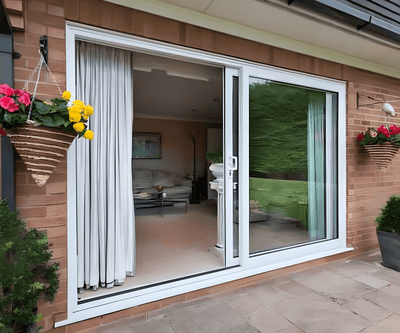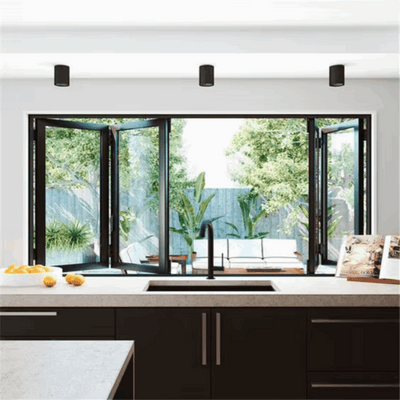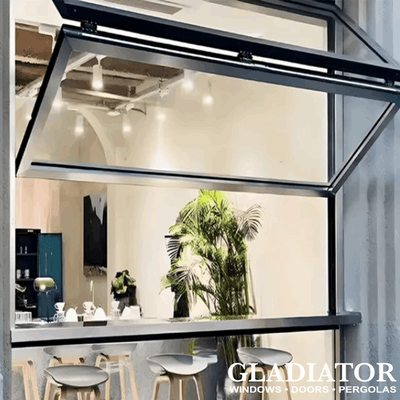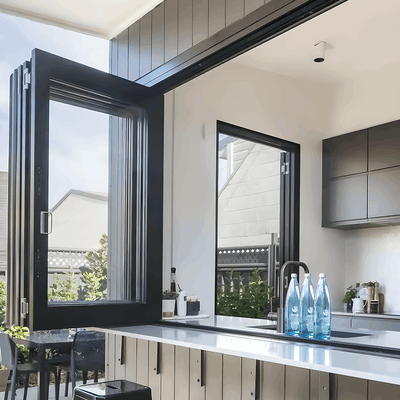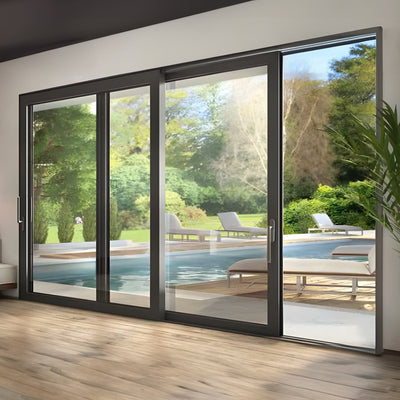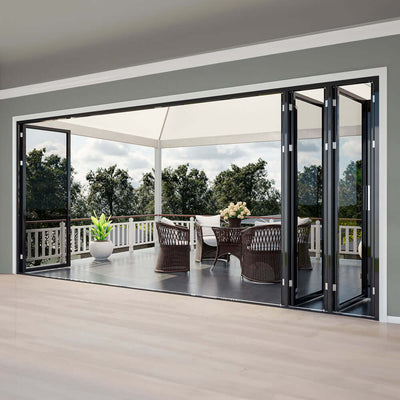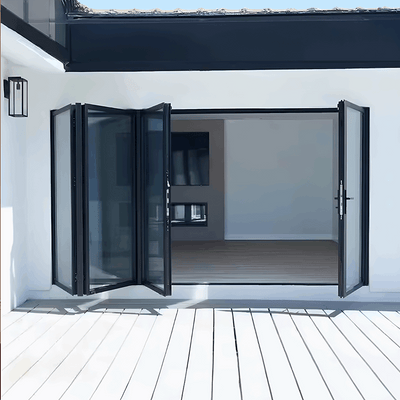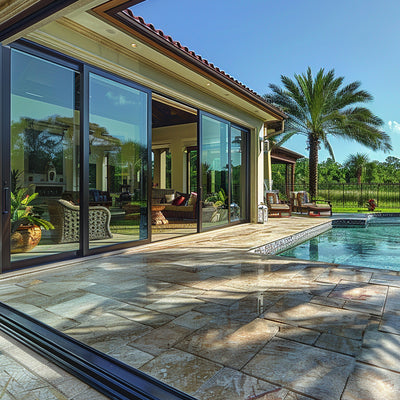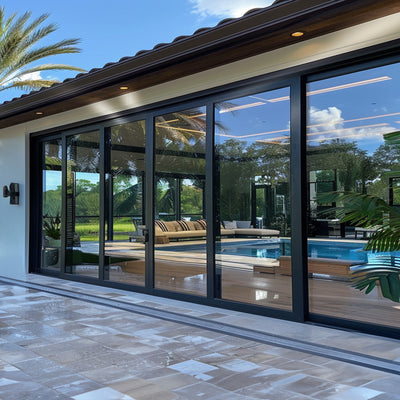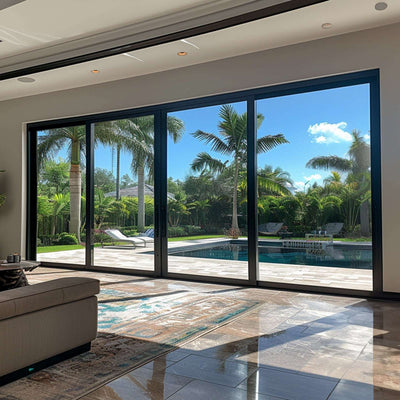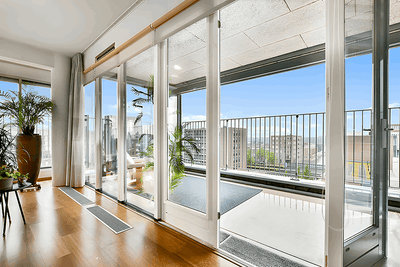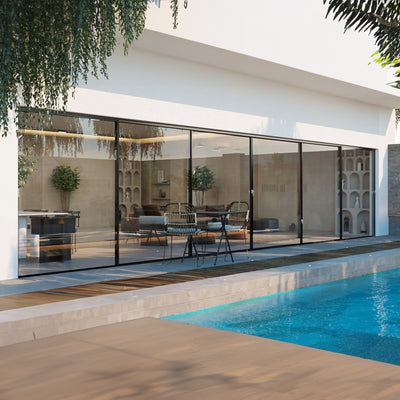Choosing Your Folding Door System: What Pros Know
Before you start installing your folding doors, picking the right system for your needs is crucial. This means understanding the different configurations, the impact of materials, and the role of each component in your door kit. Making smart choices here will significantly impact a successful installation.
Understanding Folding Door Configurations
First, you'll want to familiarize yourself with the different types of folding doors. Bifold doors usually have two panels hinged together and fold in pairs. Accordion doors, on the other hand, have multiple panels that fold, well, like an accordion! This style offers more flexibility in how much you open the doors. Multi-panel systems offer even more configurations, letting you customize solutions for larger openings or specific design needs. Understanding these differences will shape how you approach installation.
Material Matters: Durability and Aesthetics
The material you choose affects not only the look but also the lifespan and upkeep of your doors. Wood gives a classic look, while aluminum offers durability and weather resistance. Glass panels create a sense of openness and bring in natural light. Composite materials provide a good balance of strength and energy efficiency. You might be interested in: How to master...
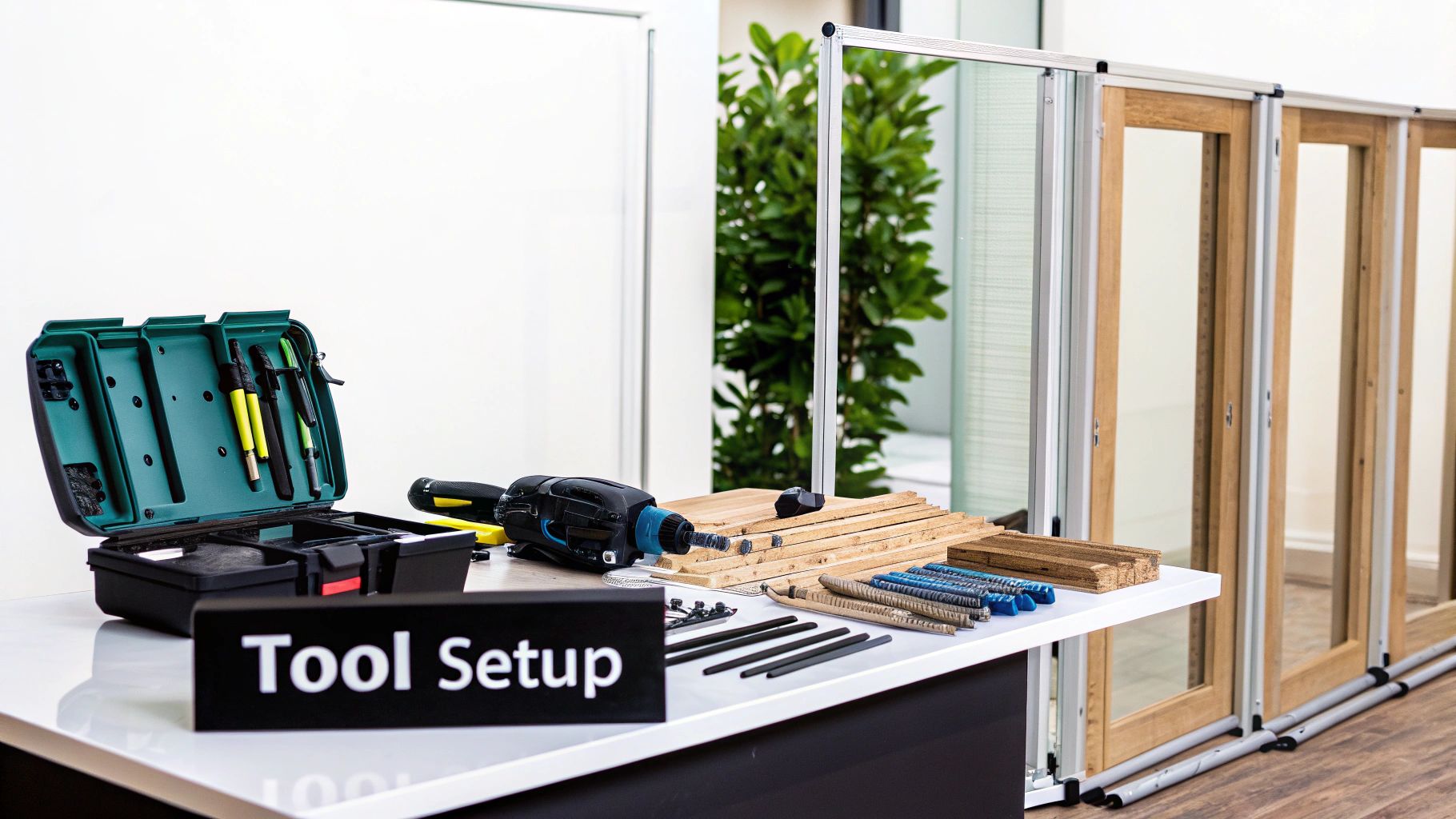
Key Components: Tracks, Hinges, and Pivots
Knowing how each part of your folding door system works is essential for a smooth installation. The track system, which can be top-hung or bottom-rolling, guides the door's movement. Hinges connect the panels, enabling them to fold, and pivots offer stability and smooth operation. The global bifold doors market is growing, reflecting increased popularity. In 2024, it was valued at about USD 10.9 billion and is projected to reach roughly USD 15.6 billion by 2033, with a CAGR of approximately 3.87% from 2025 to 2033. You can learn more here. Understanding the function of each part helps you anticipate any issues and ensures the doors work correctly.
Tooling Up for Success
Having the right tools is vital for a successful installation. Some tools are standard, but others are specific to certain door types or materials. For instance, working with aluminum frames might require different tools than wood. Making sure your tools are compatible with your door system is key. This careful preparation will save you frustration and give you a professional result.
Measuring Magic: The Foundation of Flawless Installation
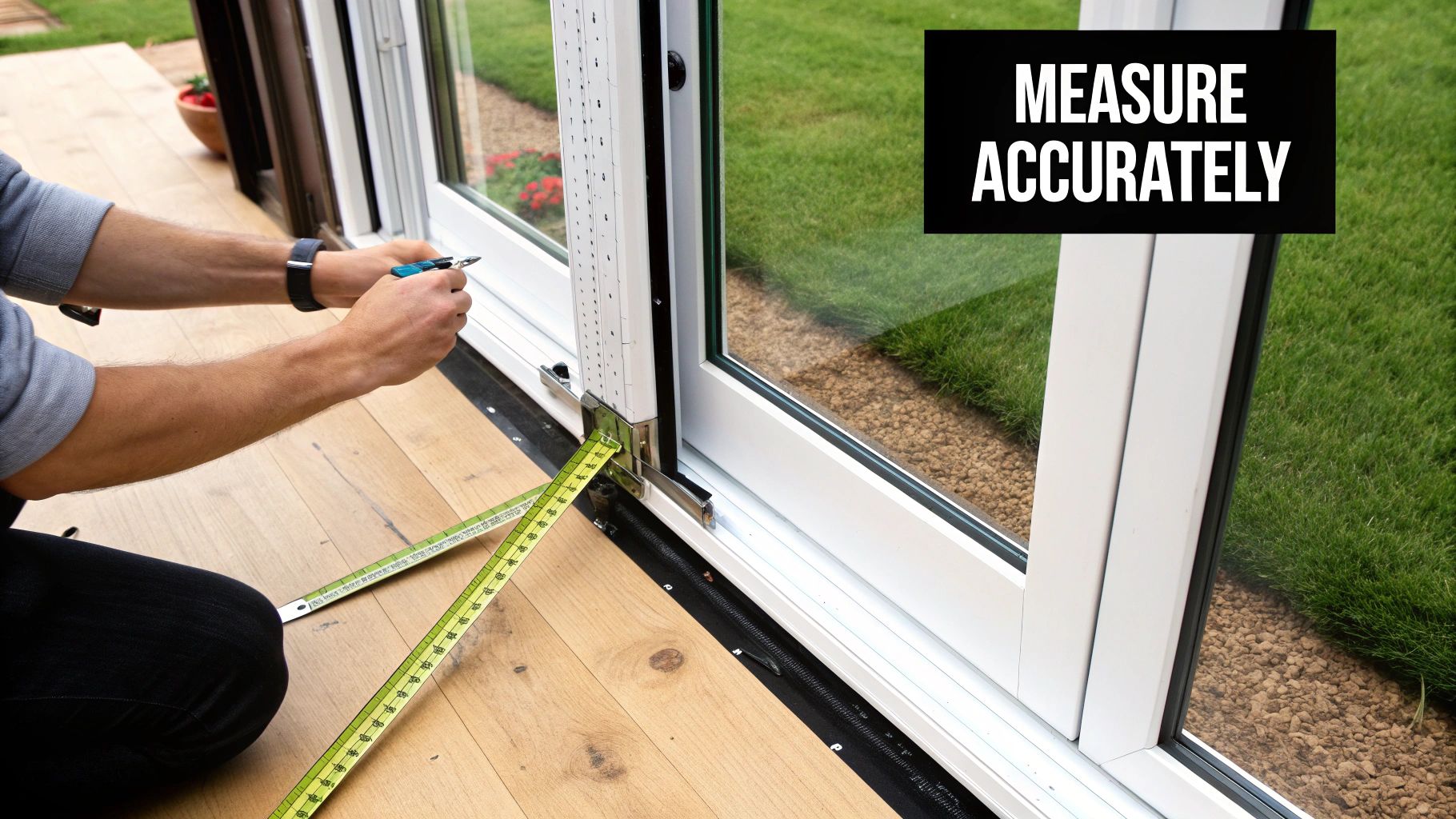
Accurate measurements are essential for a successful folding door installation. This seemingly simple step is often overlooked, leading to many DIY mishaps. This guide will walk you through the proper measuring techniques, ensuring your new folding doors fit perfectly and operate smoothly.
Taking Precise Measurements
Begin by measuring the width of the doorway opening at the top, middle, and bottom. Be sure to record all three measurements. These measurements are important because even small variations can impact the final fit. Taking measurements at multiple points helps identify any inconsistencies in the opening. Next, measure the height at the left side, the center, and the right side. Again, document all three measurements.
These height measurements help determine if your opening is square. Knowing this information beforehand allows for adjustments during installation.
Ensuring a Square Opening: A Critical Step in Folding Door Installation Instructions
Compare your width and height measurements. If the width measurements differ by more than 1/4 inch, your opening isn't perfectly square. Similarly, varying height measurements indicate an uneven opening. Minor imperfections are common and typically easily corrected during the installation process. Shimming is a useful technique to compensate for these inconsistencies.
Accounting for Clearance Gaps: A Professional Touch
Remember to factor in necessary clearance gaps. These are the small spaces around the door panels that allow for smooth operation and accommodate changes in temperature and humidity. The size of the gap will depend on the door material. A general guideline is 1/8 to 1/4 inch on all sides. These gaps prevent the doors from sticking or binding due to temperature fluctuations.
Before the table, add a sentence like, "Use this table as a guide for essential measurements."
Essential Measurements for Folding Door Installation
A comprehensive guide to the critical measurements needed before purchasing and installing folding doors
| Measurement Type | Description | Why It's Important | Common Mistakes |
|---|---|---|---|
| Width | Measurement across the door opening at the top, middle, and bottom | Ensures the doors fit the opening correctly. | Only measuring at one point; not accounting for variations in the opening. |
| Height | Measurement from top to bottom of the door opening at the left, center, and right sides | Ensures proper door height and helps determine if the opening is square. | Only measuring at one point; not accounting for an uneven floor or header. |
| Clearance Gaps | Small spaces around the door panels | Allows for smooth operation and accommodates expansion/contraction of the door material due to temperature and humidity changes. | Not accounting for clearance, resulting in binding or sticking doors. |
This table highlights the key measurements needed for a successful folding door installation. Accurately measuring these dimensions and accounting for clearance gaps ensures a proper fit and long-term functionality.
Acclimation: A Key to Preventing Future Issues
Before installation, allow your door materials to acclimate to your home's environment. This is especially crucial for wood doors, which are susceptible to expansion and contraction with humidity changes. Acclimation allows the material to adjust to its new environment before installation, minimizing the risk of warping or sticking. This simple step significantly impacts the longevity of your folding doors. By allowing for proper acclimation, you're addressing potential problems down the line and protecting your investment.
Track System Installation: The Backbone of Success
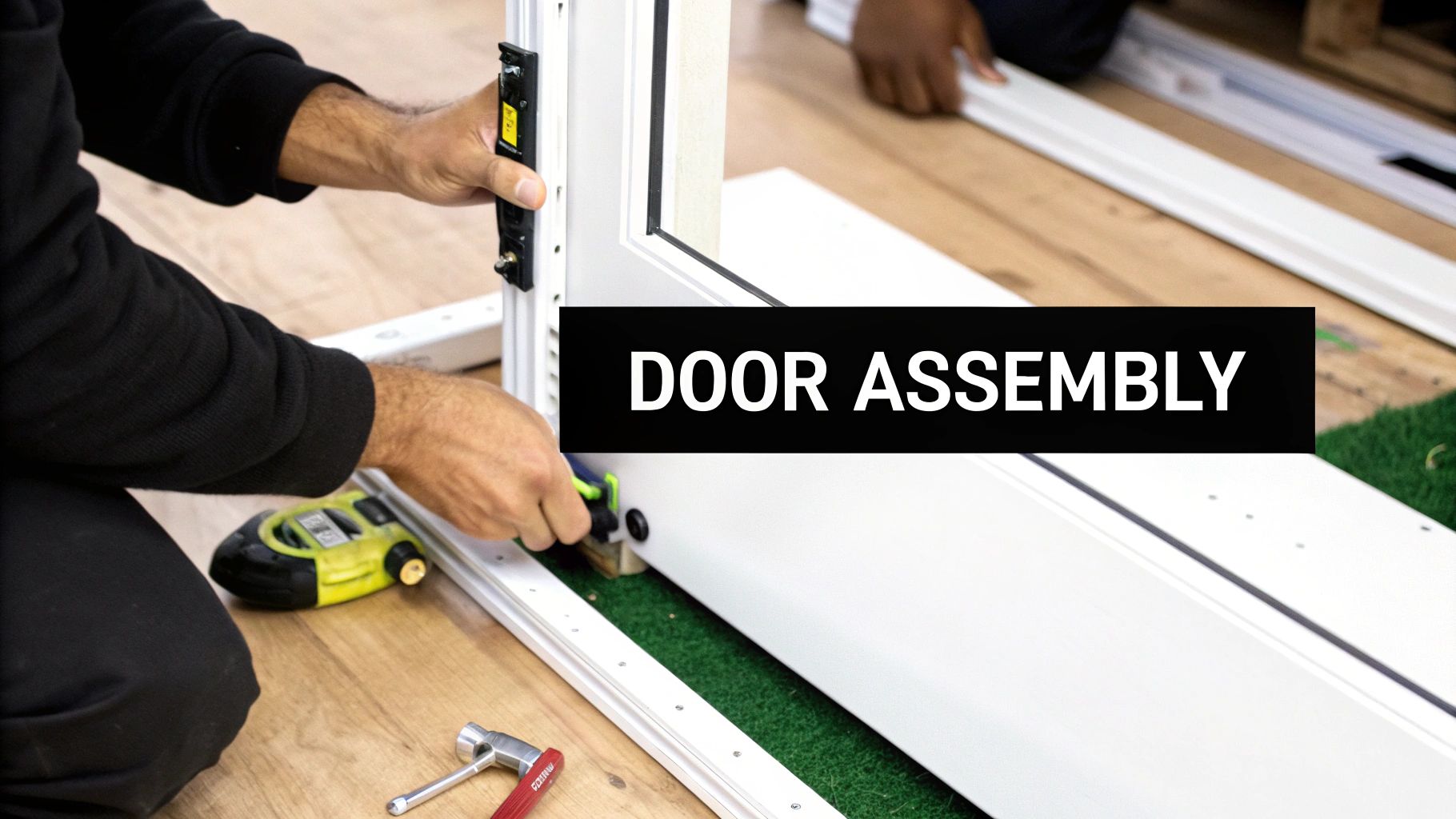
The track system is the foundation of any successful folding door installation. A correctly installed track ensures smooth and dependable operation for many years. This section will guide you through the essential steps, highlighting the key differences between top-hung and bottom-rolling systems and providing expert advice for a perfect installation.
Top-Hung vs. Bottom-Rolling: Choosing the Right Configuration
The first step is choosing between a top-hung and bottom-rolling track system. Top-hung systems support the door's weight on the top track. They are ideal for heavier doors and offer a cleaner appearance since there's no bottom track. However, top-hung systems require a strong header for support.
Bottom-rolling systems, conversely, are suitable for lighter doors and are often easier to install. Keep in mind, the bottom track can present a trip hazard. Choosing the right system depends on your specific door and the opening itself. This important decision affects the entire installation process.
Precision Mounting: Securing the Track
After choosing your system, precise mounting is essential. Whether working with solid wood headers, concrete lintels, or metal framing, use appropriate anchors and ensure the track is perfectly level.
For instance, use toggle bolts for hollow walls and concrete anchors for masonry. A level track is vital for smooth door operation and prevents binding or sticking. You can find more tips in our article about how to master tricky installations. This attention to detail ensures long-term satisfaction.
Achieving a Level Track: Tools and Techniques
Use a level to check both the horizontal and vertical alignment of the track. For longer tracks, a laser level offers increased accuracy. Shims can be used for minor adjustments to achieve a perfectly level track.
This crucial step is often overlooked, but it's vital for preventing future issues. A level track ensures even weight distribution and minimizes stress on the hardware, contributing to the longevity of your folding doors.
Threshold Installation: Balancing Accessibility and Weather Protection
Threshold installation requires careful planning, especially for exterior folding doors. The threshold must provide weather protection while remaining accessible.
Various threshold options exist, including low-profile thresholds for easy access and weather-sealed thresholds for maximum protection. Selecting the correct threshold is crucial for both functionality and safety.
Historically, folding door installation methods have evolved. In the early 2000s, installations were often complex. By 2022, however, the bifold door market reached $10.078 billion, growing at a 3.18% CAGR since 2017. This growth is often attributed to improved track systems and materials. Read the full research here. This market evolution highlights the importance of choosing a modern, high-quality track system.
Integrating with Existing Flooring: Seamless Transitions
Finally, seamlessly integrate the track system with your existing flooring. Use transition strips to bridge gaps between different flooring materials and create a smooth, professional finish.
This not only enhances the overall look but also helps to prevent trip hazards. Proper integration ensures your folding doors look and function at their best. This finishing touch elevates the entire project.
Hanging Panels Like a Pro: Sequence and Precision

With the track system securely installed, the next crucial step in your folding door installation is hanging the door panels. This stage requires a methodical approach and attention to detail. This guide breaks down the process, offering insights into techniques used by professionals for various folding door setups.
Understanding Panel Sequence: From Simple to Complex
Before you start, understanding the correct panel sequence is paramount. For basic 2-panel systems, the process is relatively straightforward. However, with more complex setups, such as 6-panel arrangements, the order in which the panels are hung becomes much more significant.
Incorrect sequencing can result in misalignment and problems with operation. Always refer to your specific folding door installation manual for the recommended panel order. Following the correct sequence will guarantee smooth and effortless opening and closing.
Positioning Pivot Points: The Key to Balanced Operation
Pivot points are essential for smooth and balanced door operation. They serve as the central point around which each panel rotates. Accurate placement of these pivots ensures even weight distribution across the door system. This prevents issues like sagging or binding.
Position the pivots precisely according to your manufacturer’s instructions. Some systems may require slightly offset pivots, while others necessitate a centered placement. Understanding these specific requirements is key to a successful installation.
Hinge Installation: Preventing Future Sagging
Hinges are another critical component, connecting the panels and allowing them to fold together. Precise hinge installation is essential to prevent future sagging and ensure smooth door operation. Use the appropriate screws, ensuring they are driven straight and securely fastened to prevent loosening over time.
Furthermore, consider using shims where necessary to maintain proper alignment between the panels. This extra step helps ensure a seamless and flush fit.
Handling Delicate and Heavy Doors: Partner Techniques
Handling door panels, especially heavy or delicate ones, requires extra care. When working with heavier doors, employ a partner technique. One person supports the panel while the other attaches it to the track. This teamwork prevents accidental damage and guarantees accurate alignment.
For delicate materials like glass, use protective padding to prevent scratches or chips during installation. These preventative measures protect your investment and contribute to a pristine final look. For more information on different door types and installation complexities, you can explore resources on bifold door market segmentation and installation.
Guide Wheel Installation: Smooth and Silent Tracking
Guide wheels, usually located at the bottom of each panel, facilitate smooth and silent movement along the bottom track. These small but vital components maintain panel alignment and prevent swaying during operation.
Install the guide wheels carefully, adhering to the manufacturer's instructions and paying close attention to their orientation and spacing. Correctly installed guide wheels contribute significantly to the overall lifespan of your folding doors.
Installing Handles, Locks, and Latches: Alignment for Security and Ease of Use
The final steps involve installing handles, locks, and latches. Precise alignment of these components is crucial, affecting not only the aesthetics but also the security and usability of the doors. Ensure handles are firmly attached and function smoothly.
For locking mechanisms, double-check alignment and operation for optimal security. These finishing touches complete the installation, making sure your folding doors are both functional and visually appealing.
Fine-Tuning For Perfect Operation: The Art of Adjustment
Achieving smooth operation with folding doors often requires some fine-tuning, even for experienced installers. This section explores the art of adjustment, transforming a functional door into a flawlessly operating system. You'll discover how to fine-tune crucial components—pivot points, guide wheels, and panel alignment—for effortless movement.
Adjusting Pivot Points: The Key to Balance
Pivot points are essential for your folding door's movement. Think of them as the center of a scale: balance is crucial. If one side feels heavier or hangs unevenly, adjusting the pivot points is the solution. Make small, incremental adjustments, testing the door after each change. This prevents over-adjusting and creating new issues. For instance, if the door swings too fast, slightly tightening the pivot point screw can slow it down. Conversely, loosening the screw can help if the door feels stiff. This creates smooth, controlled operation.
Guide Wheel Alignment: Ensuring Smooth Tracking
Guide wheels keep your folding doors gliding smoothly along the track. These small components significantly affect performance. See our guide on how to master tricky installations for more tips. If a door panel drags or sticks, the guide wheels are often the cause. Adjusting their height can fix this. Incremental changes are key. Too high, and the door might derail; too low, and it will drag. This ensures quiet and reliable movement.
Panel Alignment: Creating a Seamless Appearance
Even small misalignments between panels can look unprofessional and affect operation. Perfect panel alignment involves adjusting the hinges. This requires patience and attention to detail. By slightly adjusting the hinge screws, you can ensure the panels sit flush, both closed and open. This creates a seamless, polished look, making your folding doors a true design feature.
Troubleshooting Common Issues: A Practical Guide
Even with careful installation, issues can arise. Sticking often indicates a track alignment or guide wheel problem. Uneven panel gaps might mean pivot point or hinge adjustments are needed. If the doors won't close or latch properly, check the latching mechanism’s alignment and adjust accordingly. Understanding these common issues allows you to quickly identify and fix any problems.
Seasonal Adjustments: Maintaining Performance Year-Round
Wood, a common material for folding doors, expands and contracts with temperature and humidity changes. Adjustments made in the summer might need tweaking in the winter. This seasonal adjustment is essential for consistent operation. Regularly checking and adjusting your doors as the seasons change prevents binding and ensures optimal performance, regardless of the weather. This protects your investment and keeps your doors functional and beautiful.
Weather Protection and Finishing Details That Last
A successful folding door installation goes beyond simply hanging the panels. The finishing touches truly elevate the project. These often overlooked final steps distinguish an adequate installation from one that truly stands the test of time. This section covers weatherproofing, essential hardware, and finishing techniques to ensure your doors look and function flawlessly for years to come.
Weatherproofing: Protecting Your Investment
Weatherproofing is crucial, especially for exterior folding doors. This involves sealing gaps and installing weather stripping, seals, and gaskets. These components create a barrier against drafts and water infiltration without impacting door operation. Correct installation, typically detailed in the manufacturer's instructions, is critical for effective weather protection.
For instance, weather stripping is usually applied to the door jambs and the meeting edges of the panels. Seals and gaskets might be used around the frame and threshold to prevent leaks. Material selection, such as foam tape, silicone sealant, or rubber gaskets, depends on the door type and location.
Finishing Techniques: A Professional Touch
Proper finishing techniques safeguard your investment and extend the lifespan of your doors. This includes appropriate sealing and finishing methods, which vary based on the door material. For wood doors, applying a sealant protects against moisture damage. Aluminum or vinyl doors might require specialized coatings to preserve their finish and resist weathering.
Consider the installation of floor guides, stoppers, and catches. These small components ensure smooth door operation and prevent damage to surrounding walls and flooring. Floor guides maintain door alignment, while stoppers and catches control movement and secure the doors in both open and closed positions.
Trim and Molding: Seamless Integration
Applying trim and molding around the door frame provides a polished look. Trim conceals gaps between the frame and the wall, creating a seamless transition and enhancing the overall aesthetic. This is particularly important for interior folding door installations where visual appeal is paramount.
Choose trim and molding that complements your existing décor. Correctly installed trim not only enhances the look but also provides additional draft protection. Secure fastening ensures a durable and long-lasting finish.
To help you choose the right weatherproofing, we've compiled a table outlining different options:
Weatherproofing Options for Different Folding Door Applications: Comparison of weatherproofing solutions based on door location and environmental conditions
| Door Location | Climate Considerations | Recommended Weatherproofing | Expected Durability |
|---|---|---|---|
| Interior | Temperature and humidity fluctuations | Foam tape or brush seals | Moderate |
| Exterior (Mild Climate) | Occasional rain and wind | Compression seals and door sweeps | High |
| Exterior (Harsh Climate) | Heavy rain, snow, and extreme temperatures | Multi-layer weather stripping and specialized gaskets | Highest |
This table offers a general overview. Always consult your folding door installation instructions for specific recommendations. Achieving a professional installation isn't just about functionality; it's about attention to detail in these final steps. By addressing these elements, you maximize your investment and ensure years of trouble-free operation.
Long-Term Care: Maintaining Your Investment
After a successful folding door installation, proper maintenance is crucial for ensuring smooth operation for years to come. This guide provides a preventative maintenance schedule, cleaning tips, and advice on identifying and addressing common issues, maximizing your investment and keeping your folding doors in top condition.
Preventative Maintenance: A Schedule for Success
Just like your car, your folding doors benefit from routine check-ups. A simple monthly inspection can prevent many problems. This involves checking the tracks for debris, lubricating moving parts, and tightening any loose hardware. This proactive approach helps maintain smooth and quiet operation.
A more in-depth semi-annual check is also recommended. This should include examining hinges and pivots for wear and tear and adjusting the door alignment as needed.
Cleaning: Maintaining Appearance and Functionality
Clean folding doors not only look great, but they also function better. Different materials require different cleaning methods. Wood doors require gentle cleaning with wood-friendly products.
For aluminum and glass doors, a mild detergent solution and a soft cloth are usually sufficient. Avoid abrasive cleaners, which can scratch surfaces. Regularly cleaning the tracks is also crucial to prevent debris buildup that can hinder smooth door movement.
Identifying Early Warning Signs: Preventing Major Issues
Recognizing early warning signs can save you time and money. Here are some key indicators:
-
Changes in Operation: Doors sticking, binding, or becoming difficult to operate can indicate problems with track alignment, rollers, or pivots.
-
Unusual Sounds: Squeaking, grinding, or clicking noises often suggest lubrication issues or worn components.
-
Visible Damage: Inspect hinges, pivots, rollers, and other hardware for wear and tear. Early detection allows for timely repairs.
DIY Fixes: Addressing Common Problems
How to master tricky installations offers further troubleshooting tips. Many folding door issues can be easily resolved with simple DIY fixes. Sticky tracks often just need cleaning and lubrication.
Misaligned panels might require adjusting the hinges or pivot points. Loose hardware can be fixed by tightening screws. For example, tightening a loose pivot screw can correct a slightly sagging door panel. These simple fixes empower you to address minor issues yourself.
Component Replacement: Maintaining Long-Term Performance
Over time, components like rollers, pivots, and guides might need replacing due to wear and tear. These parts are usually readily available and relatively easy to replace. Replacing worn rollers, for example, can restore smooth and quiet door operation.
When to Call a Professional: Knowing Your Limits
While many issues can be handled with DIY maintenance, some require professional help. If you encounter complex problems or are uncomfortable with certain repairs, contact a qualified professional. This is particularly important for structural issues or damage to the tracks or frame. Professional assistance ensures correct repairs, prevents further damage, and extends the life of your doors.
Ready to enhance your home with beautiful folding doors? Visit Gladiator Window and Doors for a wide selection of custom-made options.

















